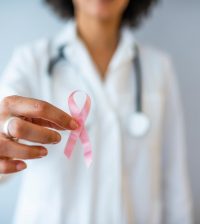- Tips for Spending Holiday Time With Family Members Who Live with Dementia
- Tainted Cucumbers Now Linked to 100 Salmonella Cases in 23 States
- Check Your Pantry, Lay’s Classic Potato Chips Recalled Due to Milk Allergy Risk
- Norovirus Sickens Hundreds on Three Cruise Ships: CDC
- Not Just Blabber: What Baby’s First Vocalizations and Coos Can Tell Us
- What’s the Link Between Memory Problems and Sexism?
- Supreme Court to Decide on South Carolina’s Bid to Cut Funding for Planned Parenthood
- Antibiotics Do Not Increase Risks for Cognitive Decline, Dementia in Older Adults, New Data Says
- A New Way to Treat Sjögren’s Disease? Researchers Are Hopeful
- Some Abortion Pill Users Surprised By Pain, Study Says
When ICUs Near Capacity, COVID Patients’ Risk for Death Nearly Doubles

When intensive care units are swamped with COVID-19 patients, death rates may climb, a new study finds.
Looking at data from 88 U.S. Department of Veterans Affairs (VA) hospitals, researchers found a pattern: COVID-19 patients were nearly twice as likely to die during periods when ICUs were dealing with a surge of patients with the illness.
The results, experts said, do not necessarily mean that a busy ICU puts COVID-19 patients at greater risk.
The study looked at numbers of patients, and not the actual care they received, said Dr. Lewis Kaplan, president of the Society of Critical Care Medicine and a professor of surgery at the University of Pennsylvania, in Philadelphia.
One hospital may have a busy ICU, but be able to expand its capacity and recruit doctors with critical-care training who do not normally work in the unit. Another hospital, Kaplan said, might have fewer COVID-19 patients, but relatively less experience caring for patients who need ventilators.
Kaplan, who was not involved in the study, said the issue is complicated, and not all hospitals would be affected by COVID-19 surges the same way. And since the researchers looked only at VA hospitals, he noted, it’s unclear whether the findings extend to other medical centers.
Kaplan stressed that as COVID-19 cases and hospitalizations continue to soar across the United States, people should not delay needed care.
“This shouldn’t make people afraid to go to the hospital,” he said. “If you’re sick, we’re here for you.”
At the same time, the findings underscore the importance of people doing everything they can to avoid contracting COVID-19.
According to study author Dr. Dawn Bravata, of the Richard L. Roudebush VA Medical Center, in Indianapolis, “What’s important is that the public should socially distance to avoid infection. The data show that mortality [death] increases during periods of peak ICU demand. Therefore, the more the public can do to avoid infection, the better.”
For the study, published online Jan. 19 in JAMA Network Open, Bravata’s team looked at data on patients treated for COVID-19 at 88 VA hospitals between March and August 2020. The vast majority were men, and their average age was 68.
The investigators found that among ICU patients, those treated during a time of “peak” ICU demand were almost twice as likely to die as those treated during relatively quiet times, when the unit was seeing no more than 25% of its peak number of COVID-19 patients.
Bravata agreed that the findings leave many questions open.
For one, she said, the study did not look at the degree to which hospitals “augmented ICU capacity” during the pandemic, and how that related to death rates. It’s also unclear how “patient characteristics” might have played a role.
Bravata pointed out that over time, death rates among COVID-19 patients varied considerably, with a high of 25% in April, to just under 13% in July and August.
“COVID-19 patient characteristics, such as age and disease severity, have also varied over time,” Bravata said.
“Future studies,” she added, “are needed to examine how much of the variation in mortality is due to patient factors versus facility factors.”
Patient factors could indeed be a contributor, said Dr. Luis Ostrosky, a professor of infectious diseases at McGovern Medical School at UTHealth in Houston.
For one, he noted, people might hesitate to head to the hospital during local COVID-19 surges. “Maybe some patients are getting to us when they’re sicker,” Ostrosky speculated.
But while all the answers are not in, the findings reflect what doctors are seeing on the ground, according to Ostrosky, who is also a fellow with the Infectious Diseases Society of America.
“COVID patients do best when they’re cared for by a team with the best resources,” he said. If local ICUs are full, and those resources are strained, that can make for care that is “not ideal,” Ostrosky added.
“In the early days of the pandemic,” he pointed out, “we always talked about ‘flattening the curve.'”
That means slowing down infection rates in the community, so that seriously ill people are not flooding hospitals all at once.
“The idea is to turn it into a manageable stream,” Ostrosky said.
That “flatten the curve” mantra, he added, is as important as ever.
More information
Harvard Medical School has advice on slowing the spread of COVID-19.
SOURCES: Dawn Bravata, MD, physician scientist, VA HSR&D Center for Health Information and Communication, Richard L. Roudebush VA Medical Center, and professor, medicine, Indiana University School of Medicine, Indianapolis; Lewis Kaplan, MD, president, Society of Critical Care Medicine, Mount Prospect, Ill., and professor, surgery, University of Pennsylvania Perelman School of Medicine, Philadelphia; Luis Ostrosky, MD, professor, infectious diseases, McGovern Medical School at UTHealth, Houston, and fellow, Infectious Diseases Society of America, Arlington, Va.; JAMA Network Open, Jan. 19, 2021, online
Source: HealthDay
Copyright © 2024 HealthDay. All rights reserved.










